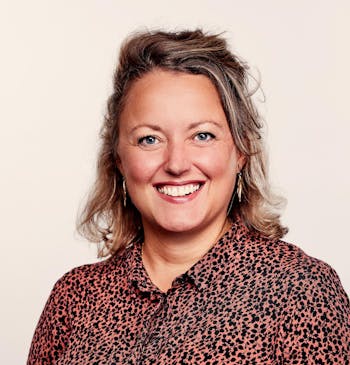Three ways to increase community participation

At Wilde Ganzen, we see great projects from partners across the globe. Community participation is one of the pillars of Wilde Ganzen’s strategy and ‘Theory of Change’. But what does this entail, and how can organisations use community participation to increase the impact and sustainability of the work they do? In this blog, we dive a bit deeper into this topic and share three aspects of successful community participation as applied by a number of our partners.
Community participation: what and why
Community participation is about involving and engaging community members in various stages of project implementation. This can include participation in decision-making, implementation of activities, monitoring, and utilisation of results. Wilde Ganzen supports the use of thorough community involvement and provides training and coaching in this field, because we see how it can help increase resilience and self-support of communities. Knowing what hampers or strengthens the work, as well as having a bottom-up understanding of community needs, can make it easier to create an impact. Also, strong communities and coordinated activities can help increase visibility towards local governments. Below, we elaborate further on how community participation can be approached.
Tips and tricks from partner organisations
Getting the community on board and behind the wheel.
Everyone knows that enthusiasm is contagious and energising. To mobilise individuals, households and organisations it is important to inspire and tune in to the intrinsic motivation of those involved. This requires open discussions and the opportunity for community members to play a driving role in the strategy determination stage. Best practices show that taking the community seriously by listening to their aspiration and motivation offers enthusiasm and motivation among community members to sustain their participation.
A lot of organisations inform their communities or consult them a few times when planning their activities. This is of course very important. We see even greater success though when community members are able to play an active role on an ongoing basis. This means that they would be able to help identify the problems and potential solutions from the very beginning. As suggested by one of our partners: ‘Look first at what the people have and can do themselves and, if necessary, supplement that.’ When community members become the co-owners of projects, project sustainability is more likely. Learn more about sustainability in this blog.
Joint priority setting and ongoing community engagement
Wilde Ganzen’s partner organisations play an essential role in streamlining the process during the implementation stage of a project. However, it is found to be crucial to make organisations and communities so-called ‘communicating vessels’ in order to stay attuned to needs. One of the partners summarised this as ‘adopt, adapt and adjust’. Responsibility for several stages of a project – planning, monitoring, evaluating and learning – should be co-owned by the community (committee) as to move from consultation or collaboration towards actual empowerment.
As ‘seeing is believing’, partners advise to invest in demonstrating hands-on solutions to generate a joint experience. Several methods are found successful, such as on-the-job training or identifying key community members who can act as role models and educators. Freedom of choice and ownership help drive commitment and success.
Leveraging community and stakeholder resources
Every community is rich in resources, despite monetary differences. There may be assets that can be utilised or monetised. Also, by mobilising social capital, a community is the gateway to knowledge, experience, and even larger networks. Tasks can be assigned to activate dormant networks and lobby for resources and goodwill.
Organisations experience benefits from working with:
- existing structures such as women’s groups, churches, village councils and elders,
- locally established project committees and sub-committees that oversee larger projects,
- other stakeholders such as governmental bodies, hospitals and regional council (for example for back-and-forth referrals of community members to leverage existing resources), and
- community members who both benefit from a project but also contribute as a volunteer, whether with specific technical skills or their time.
In conclusion
Each organisation and situation is unique, and establishing or increasing community participation requires time, patience and adjustment. However, we believe it to be an important tool to further increase impact. Our project advisors at Wilde Ganzen are more than happy discuss your community participation opportunities, successes and challenges.
Looking for additional inspiration? Then you may find the following links useful:
- Change the Game Academy | Capacity building in local fundraising and mobilising support | Wilde Ganzen
- Participatory action research (changethegameacademy.org)
- Community Participation (changethegameacademy.org)
- A pledge for motivating and mobilising communities
- Stakeholder Analysis (changethegameacademy.org),
- Crowdfunding (changethegameacademy.org)
“If we do what people can do themselves, we do not strengthen them”
Want to know more about the importance of community participation? Listen to the experiences of the Kenyan organisation Desece. In this video Sophie Kibuywa explains why she believes in active community involvement.
